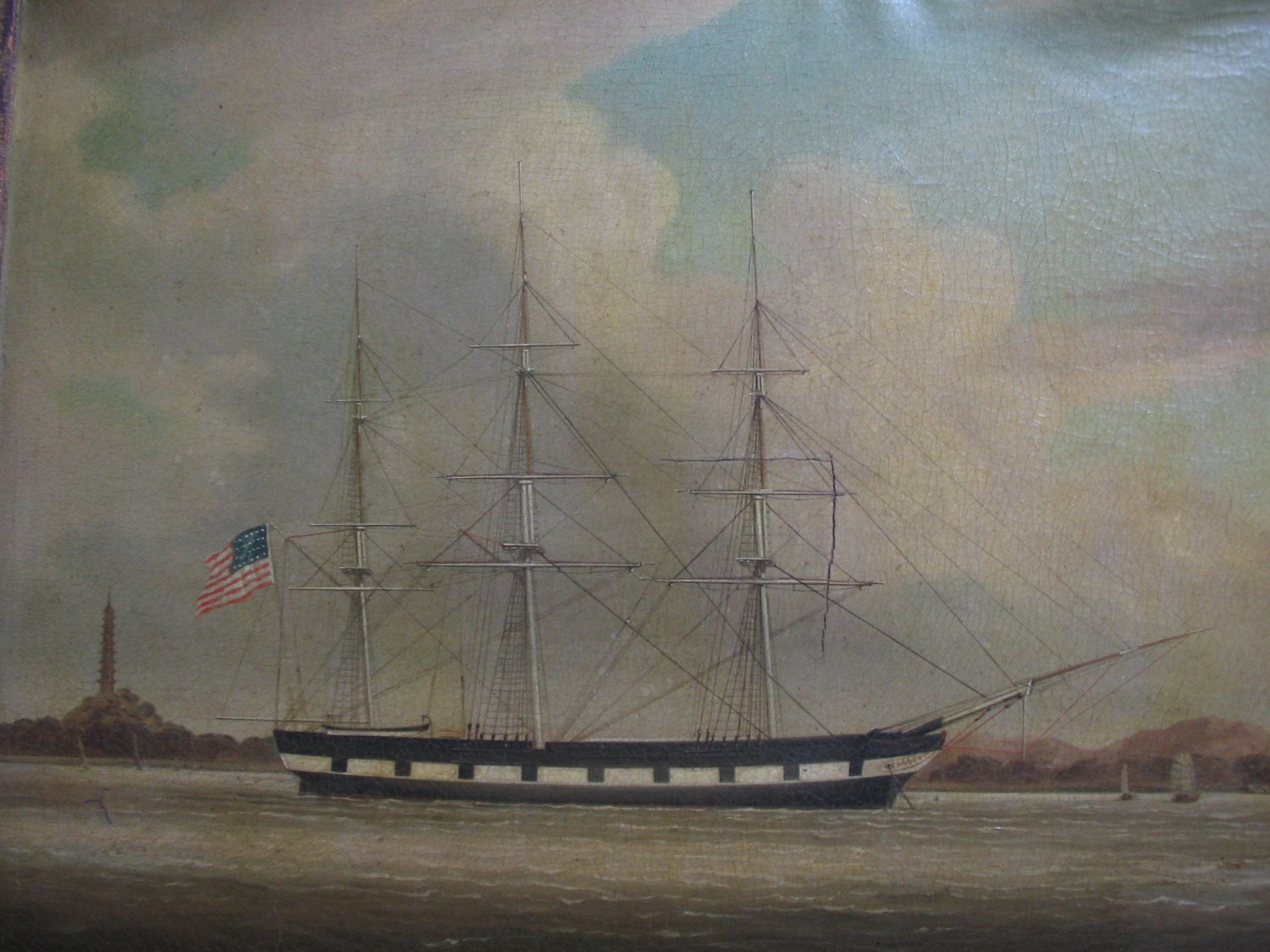One such orphan, The Niantic, was run aground to provide storage and commercial space that was so badly needed at that time. Construction materials were scarce and very expensive, so ingenious businessmen took advantage of the wooden ships floating in the bay. Ultimately, earth was packed all around the vessel and it became part of terra firma. As years passed, more and more earth was deposited between Niantic and water’s edge to expand The City out into the bay.
The Niantic was built in Connecticut in 1835. She was constructed to sail the trade route between the United States and China. Precious cargo from the “Celestial Kingdom” included teas, ceramics, silks and other highly sought after merchandise. The Opium Wars ended the China Trade for U.S. merchants in December 1840.
Subsequently, she was refitted for whaling. However, the owners of the ship, always looking for better productivity for their vessel, sent word to Henry Warren Cleveland, the ships Captain, that thousands of California bound gold seekers were stranded in Panama. Captain Cleveland set sail from Peru, where he was preparing to make the journey to Alaska in search of whales, to Panama in March 1849. The Niantic arrived in Panama, where the ship was refitted to accommodate passengers. She set sail for San Francisco on May 2nd, 1849 with 249 passengers.

Her last voyage ended after her arrival in San Francisco Bay on July 5th, 1849. The crew, typical of the times, abandoned her to dig for gold. The ship languished in Yerba Buena cove left to rot at anchor.
After an extended time, she was sold, beached, dragged inland and converted as the “storeship” Niantic. For18 months Niantic served as a storage facility netting $20,000 in rent per month.
The Niantic was destroyed by the fire that took most of the City, May 3, 1851. She was rebuilt and rebuilt again, only to be destroyed by fire. Finally the fire of 1872 marked the end of usefulness for Niantic.
The site was built over in subsequent years to be known as Montgomery Block. During renovation and excavation for the Mark Twain Complex in 1978 a portion of the stern was discovered. The artifact was removed and preserved.
At the date of this discussion the remains can be seen at the San Francisco Maritime National Museum visitor center in the Aquatic Park Building. Please check to make sure the exhibit is available to the public before you visit.
For references to the “Gold Ships”, their ultimate use and The Niantic see chapter 10 and 11 of Equal and Alike.

